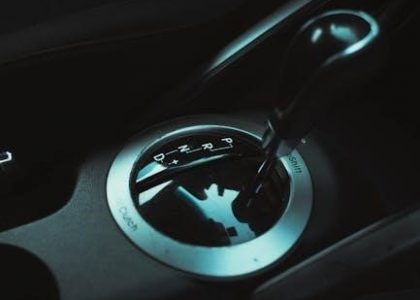Nissan vehicles feature advanced warning systems to alert drivers of potential issues. Common indicators include engine coolant, low tire pressure, and malfunction lights. These signals prompt immediate action to ensure safety and prevent damage. Modern Nissans also include ADAS (Advanced Driver-Assistance Systems), which rely on sensors and cameras to function properly. Understanding these warnings and referring to the owner’s manual is crucial for proper troubleshooting and maintenance.

Common Nissan Malfunction Indicators and Their Meanings
Nissan vehicles display specific warning lights for issues like engine coolant, low tire pressure, oil pressure, and charging system malfunctions. These indicators signal drivers to address potential problems promptly.
Engine Coolant Warning Light
The engine coolant warning light illuminates when the coolant temperature exceeds safe levels. This could indicate low coolant levels, a malfunctioning radiator fan, or a faulty temperature sensor. If the light appears, it’s crucial to stop the vehicle and allow the engine to cool to prevent damage. Drivers should check the coolant level and ensure the radiator cap is secure. Persistent issues may require professional inspection to identify leaks or faulty components. Always refer to the owner’s manual for specific guidance on this warning light in your Nissan model.
Malfunction Indicator Light (MIL)
The Malfunction Indicator Light (MIL), often called the “check engine light,” illuminates when the vehicle’s onboard diagnostics system detects an issue. This could range from a loose gas cap to more serious engine problems like faulty oxygen sensors or catalytic converter issues. If the MIL comes on, drivers should first check for simple fixes, such as tightening the gas cap. However, persistent illumination requires professional diagnostics to identify the root cause. Ignoring the MIL can lead to further damage, so consulting the owner’s manual for guidance is essential. Always address MIL warnings promptly to maintain optimal vehicle performance.

Low Tire Pressure Warning
The Low Tire Pressure Warning alerts drivers when tire pressure falls below the recommended level, potentially due to leaks, temperature changes, or worn tires. This system, monitored by the Tire Pressure Monitoring System (TPMS), ensures optimal vehicle safety and efficiency. If the warning illuminates, drivers should check tire pressure, inspect for punctures, or clear blockages like snow or ice from sensors. Restarting the system after corrections may resolve the issue. Always refer to the owner’s manual for specific guidance, as ignoring this warning can lead to reduced traction, increased stopping distances, and higher risk of tire failure. Addressing it promptly ensures safer driving conditions.
Engine Oil Pressure Warning
The Engine Oil Pressure Warning indicates low oil pressure, which can damage the engine if ignored. Causes include insufficient oil levels, a faulty oil pump, or clogged filters. If illuminated, stop the vehicle immediately to avoid engine damage. Check oil levels and top up if necessary. If the issue persists, it may signal a deeper mechanical problem requiring professional attention. Always refer to the owner’s manual for guidance. Addressing this warning promptly is crucial to maintain engine health and prevent costly repairs. Ignoring it can lead to severe engine failure, emphasizing the importance of timely action and regular maintenance.

Charging System Warning
The Charging System Warning alerts drivers to issues with the vehicle’s electrical charging system. This light typically illuminates when the alternator is not charging the battery properly or if there’s a malfunction in the system. Possible causes include a dead battery, faulty alternator, or damaged wiring. If this warning appears, it’s important to reduce electrical load by turning off non-essential systems and avoiding engine shutdown until the issue is resolved. Consulting the owner’s manual or a professional is recommended to diagnose and repair the problem promptly, ensuring the electrical system functions correctly and preventing potential breakdowns.

Nissan Advanced Driver-Assistance Systems (ADAS) Malfunctions
Nissan’s ADAS relies on sensors like cameras and radars to enable features such as adaptive cruise control and lane departure warning. Malfunctions may occur due to sensor blockage or system glitches, requiring professional diagnostics to restore functionality and safety.
ADAS Components: Lane Camera, Front Radar, and Side Radars
Nissan’s ADAS system integrates a lane camera, front radar, and side radars to enable advanced safety features. The lane camera, located on the windshield, monitors road markings for lane-keeping assist. Front radar sensors detect distance and speed for adaptive cruise control, while side radars assist with blind-spot monitoring. These components work together seamlessly, but malfunctions can occur due to sensor blockage from snow, ice, or heavy rain. Keeping these sensors clean and ensuring no obstructions are crucial for optimal ADAS performance. Regular maintenance and inspections ensure reliable operation of these critical safety systems.
ABS and EPS Issues Impacting ADAS Functionality

Anti-lock Braking System (ABS) and Electronic Power Steering (EPS) issues can disrupt Nissan’s ADAS functionality. ABS malfunctions affect braking sensors, while EPS problems impair steering sensors. Both are critical for systems like adaptive cruise control and lane-keeping assist. If ABS or EPS fails, ADAS features may deactivate, triggering warning lights and alarms. Drivers should address these issues promptly, as they can compromise safety and system performance. Regular inspections and professional diagnostics are essential to maintain seamless ADAS operation and ensure reliable vehicle control.
CANbus Communication Failures
CANbus (Controller Area Network) communication failures can cause Nissan’s electronic systems to malfunction. This network connects various vehicle components, including ADAS sensors and control units. If CANbus fails, critical data exchange is disrupted, leading to errors in systems like adaptive cruise control and lane departure warning. Symptoms may include intermittent warning lights, system deactivation, or erratic functionality. Diagnosing CANbus issues often requires specialized tools to identify faulty nodes or wiring. Addressing these problems promptly is essential to restore system functionality and ensure safe vehicle operation, as communication failures can affect multiple vehicle systems simultaneously and unexpectedly.

Troubleshooting Steps for Nissan Malfunction Warnings
Start by restarting the vehicle to reset systems. Clean sonar and radar sensors, especially the Nissan emblem on the grill. Inspect for blockages like snow, ice, or fog. Ensure all cameras and sensors are clear for proper functionality. If issues persist, refer to the owner’s manual for guidance or seek professional diagnostics to address underlying problems effectively.
Restarting the Vehicle to Reset Systems

Restarting your Nissan can often resolve minor system malfunctions. Turn off the engine, wait a few minutes, and restart the vehicle to reset electronic systems. This simple step can clear temporary glitches affecting warning lights or ADAS functionality. Ensure all accessories are turned off to allow the system to fully reset. If the issue persists, consult the owner’s manual for further guidance or contact a professional for diagnostic assistance. Regular resets can help maintain system performance and prevent unnecessary warnings.
Cleaning Sonar and Radar Sensors
Clean the sonar and radar sensors regularly to ensure proper ADAS functionality. Use a soft cloth and mild detergent to wipe away dirt, snow, or ice from the sensors located on the front grille and rear bumper. Avoid using harsh chemicals or abrasive materials that could damage the sensors. Proper maintenance ensures accurate detection and prevents system malfunctions. Refer to the owner’s manual for specific locations and cleaning instructions. Regular cleaning helps maintain the reliability of safety features like automatic emergency braking and lane departure warning systems.
Inspecting for Blockages (Snow, Ice, Fog)
Regularly inspect sensors for blockages caused by snow, ice, or fog, as these can obstruct their function. Check the front grille, rear bumper, and mirror areas where sensors and cameras are located. Clear any debris using a soft cloth or brush to ensure unobstructed visibility. Heavy snow or ice can prevent proper detection, leading to system malfunctions. For persistent issues, refer to the owner’s manual for guidance on sensor locations and cleaning methods. Regular inspections help maintain ADAS functionality and prevent false warnings, ensuring safe and reliable operation of advanced safety features.


Maintenance and Prevention Tips
Regular maintenance is key to preventing malfunctions. Clean sensors, update software, and inspect systems to ensure optimal performance. Refer to the owner’s manual for detailed guidance.
Regular Sensor Cleaning and Inspection
Regularly cleaning and inspecting sensors is crucial for maintaining Nissan’s advanced systems. Dirt, snow, or debris on cameras and radar sensors can trigger malfunction warnings. Use a soft, dry cloth to wipe the front grille emblem, rear sonars, and mirror-mounted cameras; Avoid harsh chemicals or abrasive materials that might damage the equipment. Inspect sensors after extreme weather conditions like heavy rain, fog, or snow. Cleaning these components can often resolve issues without professional intervention. Refer to the owner’s manual for specific locations and cleaning guidelines to ensure optimal performance of safety and driver-assistance features.
Updating Software and Firmware
Keeping Nissan’s software and firmware up to date is essential for resolving and preventing malfunction warnings. Outdated systems can lead to incorrect alerts or reduced functionality. Dealerships or certified technicians can perform updates using specialized tools. Some models may allow over-the-air updates or downloads via Nissan’s official website. Always refer to the owner’s manual for guidance on checking and installing updates. Regular updates ensure compatibility, improve performance, and address potential glitches. Ignoring updates may result in persistent warnings or system errors, so prioritize this maintenance step to keep your vehicle operating smoothly and safely.
Scheduling Professional Diagnostics
Scheduling professional diagnostics is crucial when Nissan malfunction warnings persist after basic troubleshooting. Certified technicians use specialized tools to identify issues that may not be apparent to drivers. They can access detailed error codes, inspect sensors, and perform repairs tailored to your vehicle’s needs. If self-resetting or cleaning sensors doesn’t resolve the issue, professional diagnostics ensure comprehensive resolution. Regular checks also prevent minor problems from escalating. Always consult the owner’s manual for guidance on when to seek professional help, ensuring your Nissan operates safely and efficiently.
Addressing Nissan malfunction warnings promptly ensures safety and efficiency. Always refer to the owner’s manual for guidance. If issues persist, consult a professional technician for proper resolution.
Importance of Referring to the Owner’s Manual
Referencing the owner’s manual is essential for understanding Nissan malfunction warnings. It provides specific guidance for interpreting lights like the engine coolant warning or malfunction indicator light. The manual details troubleshooting steps, such as cleaning sensors or restarting the vehicle. It also explains how to address ADAS issues, like blocked cameras or radar sensors. Regular maintenance tips, like updating software or inspecting sensors, are outlined to prevent future problems. Consulting the manual ensures drivers take the correct actions, avoiding potential damage or safety risks. It serves as a comprehensive guide tailored to your Nissan’s systems and needs.
Final Tips for Addressing Malfunction Warnings
Addressing Nissan malfunction warnings effectively requires a combination of immediate action and preventive measures. Always start by restarting the vehicle to reset systems, as minor glitches can often be resolved this way. Clean sensors and cameras regularly, especially after harsh weather conditions. Inspect for blockages like snow or debris that may interfere with ADAS functionality. Stay updated with the latest software and firmware to ensure optimal performance. If issues persist, consult a professional for diagnostics. By following these steps, you can maintain your Nissan’s reliability and safety, ensuring a smooth driving experience.





